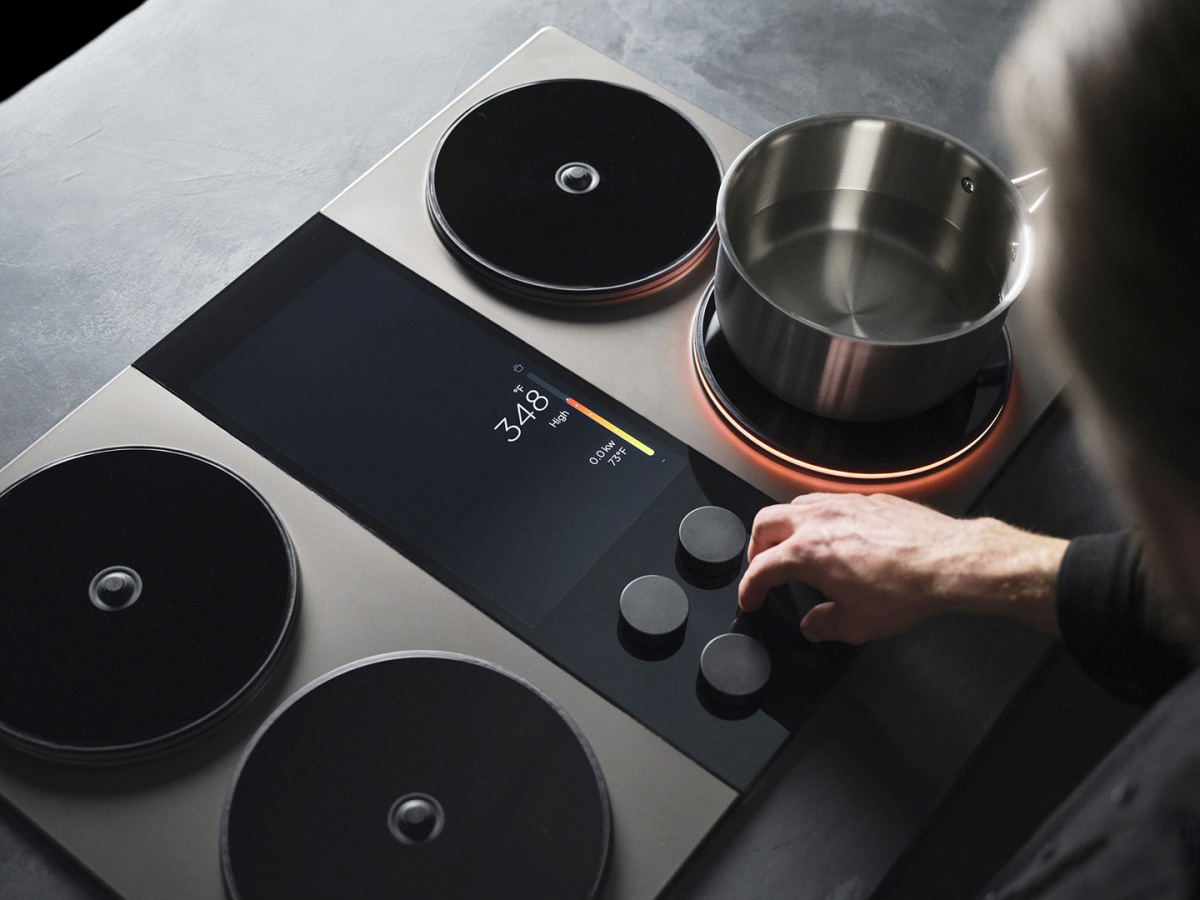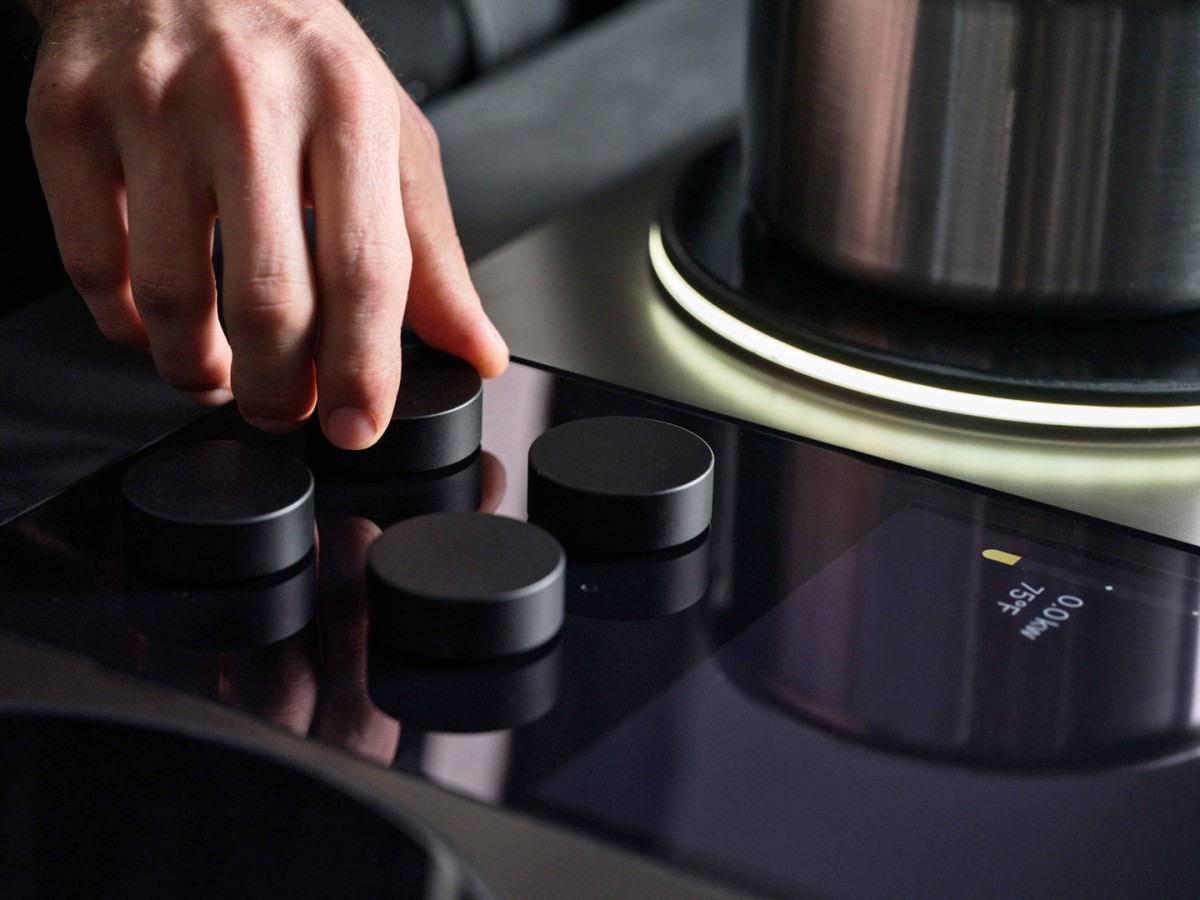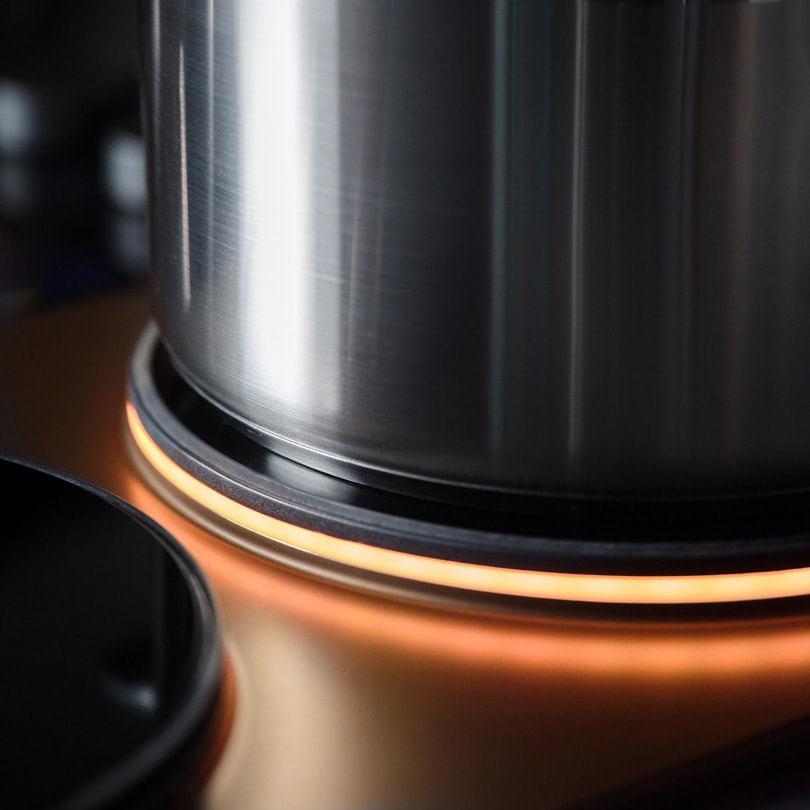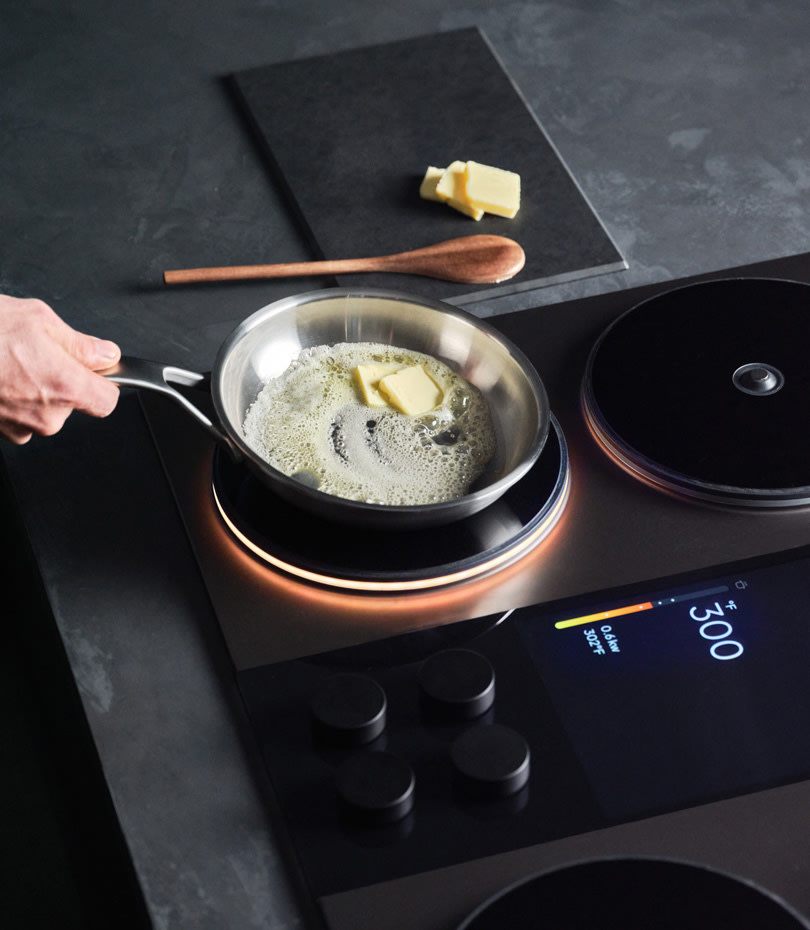- | 8:00 am
How a former Facebook engineer designed an induction stove that also stores energy for the grid
Impulse’s sleek new stove, which launched today, has a battery inside to help it outperform gas.

Four years ago, engineer Sam D’Amico was working at Facebook on its mixed-reality headset. But D’Amico, who loves to cook, started thinking about how he could apply his skills to something very different: designing a better stove.
In 2021, he left his job to launch a startup called Impulse, and he began working with a team on a new induction stove that could help convince consumers to ditch their gas ranges—and as a bonus, help add energy storage to the grid.
The problems with gas stoves keep getting more obvious as new studies come out. Cooking with gas can emit more benzene, a carcinogen, than smoking cigarettes. Stoves also emit other pollutants, including nitrogen dioxide, carbon monoxide, and methane, a potent greenhouse gas. (Even when your stove is off, it still leaks pollution into your indoor air.)
Induction stoves, which run on electricity and use an electromagnetic field to heat pans, avoid those problems. But some cooks are hesitant to make the switch because they’re convinced that gas is better. That’s thanks in part to the gas industry, which has spent decades pushing the idea that gas stoves are superior. Still, Impulse realized that there were ways to change the experience of using an induction cooktop so that it could more clearly outperform gas.

First, thanks to a battery inside, the new cooktop is more powerful. “We can boil water in under 40 seconds,” D’Amico says. “On my Viking gas stove, that’s six and a half minutes.”
The new stove is also more precise—each burner can be adjusted to a specific temperature instead of just a generic medium or high. (Since recipes don’t typically include a stovetop temperature, the display also shows how temperatures correspond to low/medium/high, and the company plans to offer instructional recipes for different foods.) Sensors track the temperature inside pans, so the burner can automatically adjust while cooking and it’s possible to avoid something boiling over or burning. These sensors mean the stove can also replace appliances like a rice cooker or deep fryer, because it’s possible to hold a steady temperature.
“With gas stoves, people have kind of implicitly learned how to do temperature control—it’s more of an art than a science,” says D’Amico. “We [made] something objective: You put the pan down, it’s at the temperature, and it just works.”
Most induction cooktops use touchscreens with buttons to adjust temperature, but many cooks dislike the feature, so Impulse added knobs. (Because many current induction stoves use the same power electronics, D’Amico says, other brands are stuck with LED indicators and touch controls, but the Impulse team was able to design a new system.) To replace the visual indicator of looking at a flame on a gas burner, a ring glows on the surface to show that a burner is on.

The battery in the stove means that it can keep working even if the power goes off. But it also makes the appliance easier to install. Right now, if someone lives in a home with older wiring, they often need expensive electrical upgrades to put in an induction cooktop. With the battery, the stove can plug into an ordinary outlet. (Channing Street Copper Company, another startup with an induction stove, also includes a battery in its design for this reason.)
And the battery can double as a little extra power storage. An inverter in the device makes it possible to send energy back into the house or electric grid. If customers opt in, utilities can use software to send power back and forth when needed. Impulse plans to eventually offer other appliances with similar batteries.

As demand for electricity increases, the storage could potentially help stabilize the grid. The 3-kilowatt-hour stove battery is small, but in theory, if a few battery-equipped devices like this were in every home, the network of appliances could act as a virtual power plant, supplying power when the grid needed it. It could be possible to avoid some expensive, time-consuming upgrades to transmission lines. If Americans replace their appliances once every 10 years, D’Amico estimates that there could be the potential to add 140 gigawatt-hours of storage every year, far more than is currently being built on the grid.

“There’s actually a really big opportunity in moving all appliances to this architecture, in terms of being able to throw tons of battery storage on the grid as fast as possible,” D’Amico says. Ultimately, the potential for energy storage is his biggest motivation. The way to make that happen, he says, is to build the best possible appliances, so people want to buy them not because they avoid pollution or help with energy storage but because of how they perform.
The cooktop, now available for preorders, will be shipping later this year. The launch price is $5,999 (with a limited number available at $5,499), comparable to some high-end ranges, though it’s eligible for government tax credits and rebates that could cut that cost nearly in half.






































